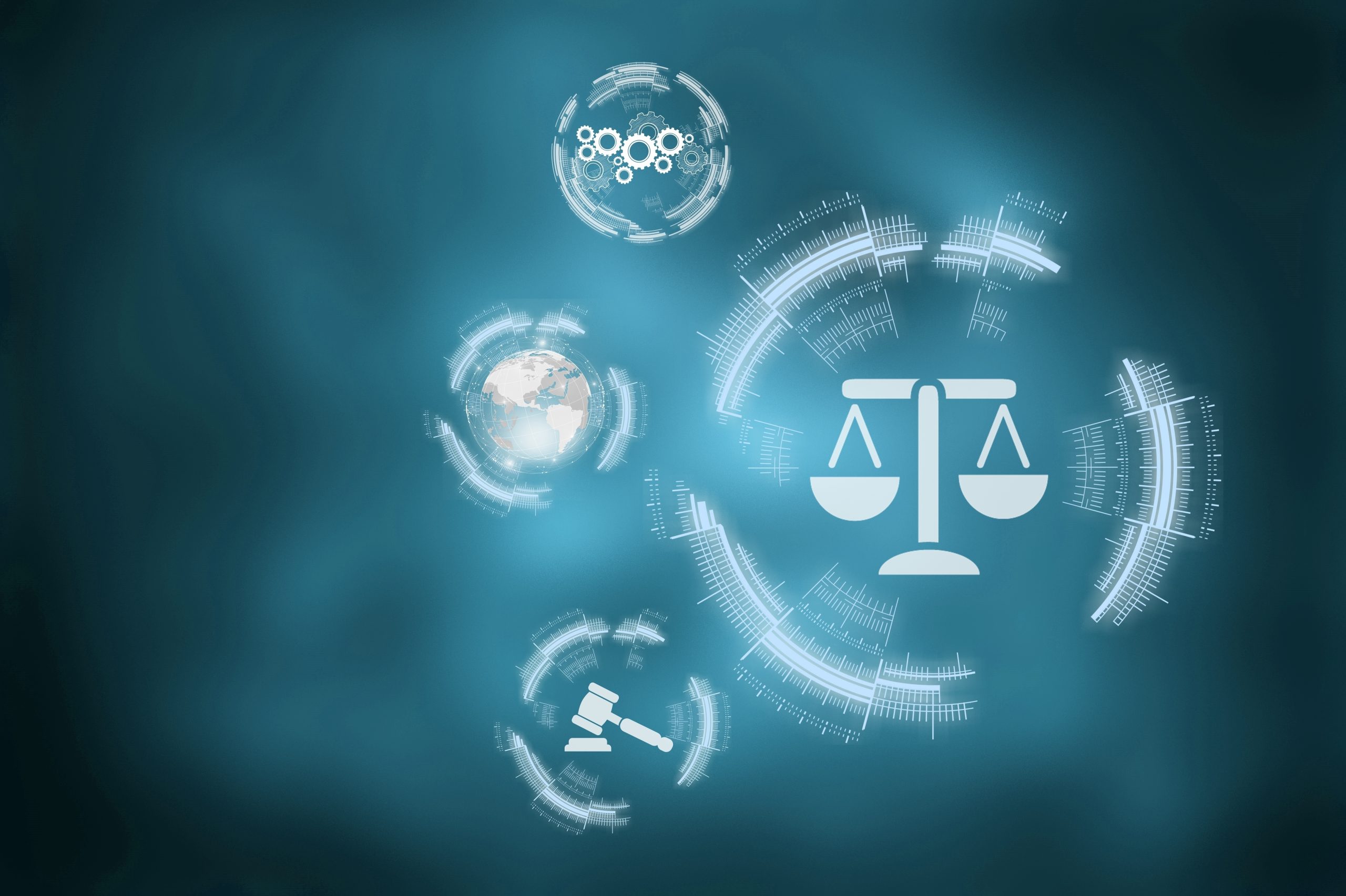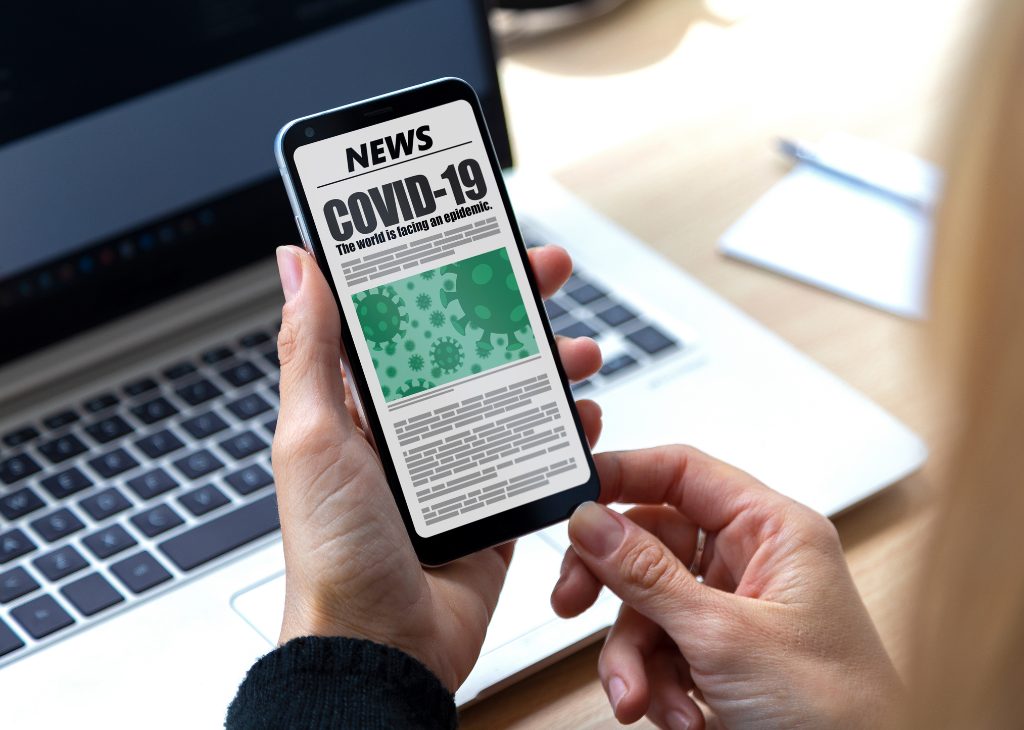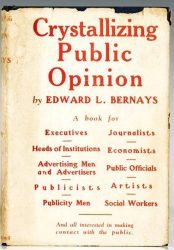
How to Foster Discovery and Innovation Through Data Among PR Teams
 Fueled by advances in digital tools and artificial intelligence (AI), public relations is transforming into a data-driven practice. Communicators must curate, analyze, and draw insight from disparate streams of data to inform decisions relevant to organizations and society. This rapid evolution demands an equally quick adaptation from communicators, who have indicated they want more training and development in this increasingly complex space.Dr. Emily Kinsky, Professor Michele Ewing, and I recently conducted research to examine how senior communicators are adapting to and leading teams in this data revolution. We conducted 28 in-depth interviews with communication practitioners with data and analytics experience. Participants worked at a wide variety of organizations. Many participants were members of the Institute for Public Relations Measurement Commission and International Association for Measurement and Evaluation of Communication (AMEC), and they reported an average of 20 years of experience in communication.As highlighted below, participants described how they are leading their teams, including efforts to (1) foster a culture that enables risk taking, creativity, and curiosity, (2) create and enable diverse team structures, and (3) support and champion employees.
How to Foster a Culture of Risk Taking, Creativity and Curiosity
Suggestions from Participants
How to Facilitate
Create a safe environment that allows for data interpretation failure
Encourage risk taking by creating awards such as “mistake of the month” or the “biggest flop” (p. 6 of study)
Give employees the time to thoughtfully analyze
Give employees time to ideate and to look for connections between online and offline sources of data. Don’t overburden employees with constant deadlines that leave little room for innovative problem solving and discovery
Encourage diverse data interpretations
Facilitate a show and tell environment of data interpretations so employees can build upon one another’s thoughts to help an interpretation evolve from good to great
Champion curiosity
Teach employees to ask good questions and to be a contrarian
Prioritize honesty in data interpretations
Remind employees to share honest interpretations, even when results indicate a failure by the organization or client
How to Create and Enable Diverse Team Structures
Suggestions from participants
Why to facilitate
Recruit employees who are innately curious
Degree is less important than whether an applicant is inquisitive
Encourage employees from different departments, experiences, and viewpoints to work together when examining data
Doing so helps organizations avoid silos and to engender a more holistic interpretation
How to Champion Support and Champion Employees
Suggestions from participants
How to facilitate
Support and affirm self-learning of employees
Give employees the time to do online training courses or to attend conferences
Empower employees to support one another
Create a brownbag show-and-tell lunch or a sandbox environment for exploration
Mentor employees individually on how to work with data and analytics
Coach employees in one-on-one sessions to dig deep in their analysis and to gain confidence
Cultivate a passion for data and analytics as a career path
Make data interpretation fun at work and helps employees to map out a career path in this space
Respondents also mentioned using data to help their teams be more efficient. Data allowed them to demonstrate the impact of their strategies and tactics on organizational outcomes. They explained the importance of using data to identify and understand their audiences, construct stories, and motivate and amplify stakeholders. According to participants, three skills comprise the trifecta of data leadership in public relations practice: strategic counseling, storytelling, and data expertise.In summary, our research provides examples of how communicators can create or adapt an analytics-led, insight-driven culture among teams and to use to use data to elevate their status and the industry.The authors thank the Commission on Public Relations Education for championing this work and the Bob Schieffer College of Communication of Texas Christian University for sponsoring the research. The authors also thank the many IPR and AMEC members for sharing their insight and experiences.References: O’Neil, J., Kinsky, E., & Ewing, M. Insights from senior communicators: Navigating obstacles, leveraging opportunities, and leading teams to capitalize on data and analytics. Public Relations Review, 49(4), 1-10. https://doi.org/10.1016/j.pubrev.2023.102362
Fueled by advances in digital tools and artificial intelligence (AI), public relations is transforming into a data-driven practice. Communicators must curate, analyze, and draw insight from disparate streams of data to inform decisions relevant to organizations and society. This rapid evolution demands an equally quick adaptation from communicators, who have indicated they want more training and development in this increasingly complex space.Dr. Emily Kinsky, Professor Michele Ewing, and I recently conducted research to examine how senior communicators are adapting to and leading teams in this data revolution. We conducted 28 in-depth interviews with communication practitioners with data and analytics experience. Participants worked at a wide variety of organizations. Many participants were members of the Institute for Public Relations Measurement Commission and International Association for Measurement and Evaluation of Communication (AMEC), and they reported an average of 20 years of experience in communication.As highlighted below, participants described how they are leading their teams, including efforts to (1) foster a culture that enables risk taking, creativity, and curiosity, (2) create and enable diverse team structures, and (3) support and champion employees.
How to Foster a Culture of Risk Taking, Creativity and Curiosity
Suggestions from Participants
How to Facilitate
Create a safe environment that allows for data interpretation failure
Encourage risk taking by creating awards such as “mistake of the month” or the “biggest flop” (p. 6 of study)
Give employees the time to thoughtfully analyze
Give employees time to ideate and to look for connections between online and offline sources of data. Don’t overburden employees with constant deadlines that leave little room for innovative problem solving and discovery
Encourage diverse data interpretations
Facilitate a show and tell environment of data interpretations so employees can build upon one another’s thoughts to help an interpretation evolve from good to great
Champion curiosity
Teach employees to ask good questions and to be a contrarian
Prioritize honesty in data interpretations
Remind employees to share honest interpretations, even when results indicate a failure by the organization or client
How to Create and Enable Diverse Team Structures
Suggestions from participants
Why to facilitate
Recruit employees who are innately curious
Degree is less important than whether an applicant is inquisitive
Encourage employees from different departments, experiences, and viewpoints to work together when examining data
Doing so helps organizations avoid silos and to engender a more holistic interpretation
How to Champion Support and Champion Employees
Suggestions from participants
How to facilitate
Support and affirm self-learning of employees
Give employees the time to do online training courses or to attend conferences
Empower employees to support one another
Create a brownbag show-and-tell lunch or a sandbox environment for exploration
Mentor employees individually on how to work with data and analytics
Coach employees in one-on-one sessions to dig deep in their analysis and to gain confidence
Cultivate a passion for data and analytics as a career path
Make data interpretation fun at work and helps employees to map out a career path in this space
Respondents also mentioned using data to help their teams be more efficient. Data allowed them to demonstrate the impact of their strategies and tactics on organizational outcomes. They explained the importance of using data to identify and understand their audiences, construct stories, and motivate and amplify stakeholders. According to participants, three skills comprise the trifecta of data leadership in public relations practice: strategic counseling, storytelling, and data expertise.In summary, our research provides examples of how communicators can create or adapt an analytics-led, insight-driven culture among teams and to use to use data to elevate their status and the industry.The authors thank the Commission on Public Relations Education for championing this work and the Bob Schieffer College of Communication of Texas Christian University for sponsoring the research. The authors also thank the many IPR and AMEC members for sharing their insight and experiences.References: O’Neil, J., Kinsky, E., & Ewing, M. Insights from senior communicators: Navigating obstacles, leveraging opportunities, and leading teams to capitalize on data and analytics. Public Relations Review, 49(4), 1-10. https://doi.org/10.1016/j.pubrev.2023.102362
 Dr. Julie O’Neil is a Professor and Associate Dean for Graduate Studies and AdministrationStrategic Communication at Texas Christian University. Her areas of focus are public relations, internal communication, corporate social responsibility, measuring and evaluating communication programs and public relationships.
Dr. Julie O’Neil is a Professor and Associate Dean for Graduate Studies and AdministrationStrategic Communication at Texas Christian University. Her areas of focus are public relations, internal communication, corporate social responsibility, measuring and evaluating communication programs and public relationships.
 Dr. Emily Kinsky is a Professor of Media Communication at West Texas A&M University. Her research interests include PR education, crisis communication, social media, and media depictions, including the portrayal of public relations and journalism in the media.
Dr. Emily Kinsky is a Professor of Media Communication at West Texas A&M University. Her research interests include PR education, crisis communication, social media, and media depictions, including the portrayal of public relations and journalism in the media.
 Michele Ewing, APR, Fellow PRSA, is a professor at Kent State University with more than 30 years of experience in agency and corporate public relations and public relations education.
...
Michele Ewing, APR, Fellow PRSA, is a professor at Kent State University with more than 30 years of experience in agency and corporate public relations and public relations education.
...

 This blog is provided by the IPR Organizational Communication Research Center.Dr. Kati Tusinski Berg and Dr. Katharine E. Miller examined how women leaders in the public relations industry advanced diversity, equity, and inclusion (DEI) efforts and empowered their organizations. In-depth qualitative analysis of publicly available statements from 70 female honorees named to PRWeek’s “Women of Distinction” (formerly Hall of Femme) classes of 2020, 2021, and 2022 was conducted. Key findings include:1.) The women leaders examined in the study practiced their advancement and empowerment of DEI through four main approaches:— They practiced empathetic leadership and built meaningful connections.— They reimagined the workplace and workplace culture.— They showed a commitment to and celebration of DEI efforts.— They championed purpose-driven work and organizations.Read the original research here.
...
This blog is provided by the IPR Organizational Communication Research Center.Dr. Kati Tusinski Berg and Dr. Katharine E. Miller examined how women leaders in the public relations industry advanced diversity, equity, and inclusion (DEI) efforts and empowered their organizations. In-depth qualitative analysis of publicly available statements from 70 female honorees named to PRWeek’s “Women of Distinction” (formerly Hall of Femme) classes of 2020, 2021, and 2022 was conducted. Key findings include:1.) The women leaders examined in the study practiced their advancement and empowerment of DEI through four main approaches:— They practiced empathetic leadership and built meaningful connections.— They reimagined the workplace and workplace culture.— They showed a commitment to and celebration of DEI efforts.— They championed purpose-driven work and organizations.Read the original research here.
... 
 This summary is provided by the IPR Organizational Communication Research CenterDr. James Ndone examined how negative employee-organization relationships impacted an organization’s internal reputation and its employees’ negative emotions as well as unsupportive behavior during a crisis. Negative employee-organization relationships (NEOR) were manifested by distrust, dissatisfaction, control dominance (how an organization intentionally neglected and controlled employees during decision making), and dissolution (employees’ willingness to break their relationship with an organization).Furthermore, the researcher investigated how an organization’s crisis responses, such as denial (e.g., finding a scapegoat or attacking the accuser) versus rebuilding (e.g., offering apology and compensation), may change the effect of NEOR during a crisis. Lastly, the research explores how the timing of the organization’s crisis responses, thunder (responding after crisis news coverage) versus stealing thunder (self-disclosing crisis information before news coverage), may also alter the impact of NEOR.An online experiment of 465 full-time employees working in the phone manufacturing industry in the United States was conducted in March 2021.Key findings include:1.) NEOR negatively impacted internal reputation and increased the likelihood of employees engaging in unsupportive behavior during a crisis.— The effects of NEOR mentioned above did not change when the organization chose different timing strategies of responding to the crisis.2.) Rebuilding crisis responses lessened the impact of NEOR on employees’ unsupportive behavior. 3.) NEOR intensified employees’ anger and anxiety during the crisis, which in turn affected the organization’s internal reputation negatively.Implications for PracticeOrganizations should cultivate positive relationships and avoid negative relationships with their employees as this may help the organization weather a crisis. When a crisis occurs, public relations practitioners should help the organization monitor employees’ emotions and especially try to minimize their anxiety and anger. Additionally, organizations can consider adopting rebuilding strategies to respond to a crisis when appropriate, which will help decrease employees’ unsupportive behaviors.
...
This summary is provided by the IPR Organizational Communication Research CenterDr. James Ndone examined how negative employee-organization relationships impacted an organization’s internal reputation and its employees’ negative emotions as well as unsupportive behavior during a crisis. Negative employee-organization relationships (NEOR) were manifested by distrust, dissatisfaction, control dominance (how an organization intentionally neglected and controlled employees during decision making), and dissolution (employees’ willingness to break their relationship with an organization).Furthermore, the researcher investigated how an organization’s crisis responses, such as denial (e.g., finding a scapegoat or attacking the accuser) versus rebuilding (e.g., offering apology and compensation), may change the effect of NEOR during a crisis. Lastly, the research explores how the timing of the organization’s crisis responses, thunder (responding after crisis news coverage) versus stealing thunder (self-disclosing crisis information before news coverage), may also alter the impact of NEOR.An online experiment of 465 full-time employees working in the phone manufacturing industry in the United States was conducted in March 2021.Key findings include:1.) NEOR negatively impacted internal reputation and increased the likelihood of employees engaging in unsupportive behavior during a crisis.— The effects of NEOR mentioned above did not change when the organization chose different timing strategies of responding to the crisis.2.) Rebuilding crisis responses lessened the impact of NEOR on employees’ unsupportive behavior. 3.) NEOR intensified employees’ anger and anxiety during the crisis, which in turn affected the organization’s internal reputation negatively.Implications for PracticeOrganizations should cultivate positive relationships and avoid negative relationships with their employees as this may help the organization weather a crisis. When a crisis occurs, public relations practitioners should help the organization monitor employees’ emotions and especially try to minimize their anxiety and anger. Additionally, organizations can consider adopting rebuilding strategies to respond to a crisis when appropriate, which will help decrease employees’ unsupportive behaviors.
... 
 IPR is featuring research throughout October in support of National Disability Employment Awareness Month (NDEAM).The National Disability Institute researched the challenges and opportunities for small business owners who have disabilities.Multiple methods were used including a review of past census bureau survey data, in-depth surveys, focus groups, and interviews. Data were collected in 2022.Key findings include:1.) 61% of respondents agreed or strongly agreed with the statement: “I have to demonstrate superior knowledge to be taken seriously as a business owner with a disability.”2.) 58% of respondents said they’ve used their disability experiences to develop and design products and services others haven’t thought of.3.) 29% of respondents said networking with business owners who aren’t disabled is challenging because they get treated like they do not belong.4.) 16% of respondents said they’ve lost customers because the customers preferred to work with business owners without disabilities.Read the original research here.
...
IPR is featuring research throughout October in support of National Disability Employment Awareness Month (NDEAM).The National Disability Institute researched the challenges and opportunities for small business owners who have disabilities.Multiple methods were used including a review of past census bureau survey data, in-depth surveys, focus groups, and interviews. Data were collected in 2022.Key findings include:1.) 61% of respondents agreed or strongly agreed with the statement: “I have to demonstrate superior knowledge to be taken seriously as a business owner with a disability.”2.) 58% of respondents said they’ve used their disability experiences to develop and design products and services others haven’t thought of.3.) 29% of respondents said networking with business owners who aren’t disabled is challenging because they get treated like they do not belong.4.) 16% of respondents said they’ve lost customers because the customers preferred to work with business owners without disabilities.Read the original research here.
... 


 In today’s fast-paced work environment, effective communication is the backbone of success. It enables teams to collaborate seamlessly, fosters stronger professional relationships, and enhances efficiency within an organization. However, to truly harness the potential of communication, it is essential to go beyond the daily exchanges of information. One aspect of communication that often gets overlooked is the process of understanding and communicating values. Understanding how individual and organizational values align is critical to maximizing the effectiveness of your team’s communication. By recognizing the importance of values, leading by example, and encouraging continuous learning, organizations can create a positive work environment where employees feel engaged, motivated, and committed to shared goals. In this blog post, we will review a step-by-step guide to communicating values as a means of bolstering professional relationships and increasing efficiency across your organization.1. Emphasize the Importance of ValuesValues serve as the guiding principles that shape an organization’s culture and decision-making. They are the essence of what an organization stands for. When employees understand and embrace these values, they are more likely to feel a sense of purpose and engagement in their work. By recognizing the significance of values, individuals can actively contribute to a positive work environment, enhance collaboration, and increase overall organizational efficiency.Furthermore, individuals’ values ultimately shape an organization’s culture, define its identity, and guide decision-making. By communicating personal values within the organization, you create a shared sense of purpose that enhances cooperation. Therefore, create an environment in which individuals are encouraged to talk about their values, at both the personal and professional levels, to create a foundation for effective communication.2. Reflect on Personal ValuesTo begin, start by understanding your own values, ask yourself: “What do I value?” Then, ask yourself: “What have I done today that is an expression of that value?”Self-reflection enables you to recognize what truly matters to you, which in turn helps you communicate your perspective effectively. It also allows you to better understand the values of others and appreciate diverse viewpoints, fostering a culture of inclusivity and respect.3. Encourage Active ListeningActive listening is a critical for effective communication. When engaging in conversations, strive to understand the underlying values and motivations behind people’s words. By actively listening, employees can gain a deeper understanding of their colleagues’ values, experiences, and motivations. This understanding fosters empathy, enhances collaboration, and strengthens professional relationships, leading to increased efficiency and productivity.If you’re not sure that your communicating your values in a clear fashion, ask someone: “What do you think I value the most?” Their answer will provide insights beyond your expectations, regardless if you agree or not.5. Lead by ExampleLeaders play a pivotal role in shaping and maintaining a values-driven environment. Therefore, act as a role model by consistently embodying the values you wish to promote. When your words and actions are aligned, you inspire trust and confidence amongst your team members, paving the way for a culture of open communication and shared values.When leaders consistently demonstrate the values they espouse, they inspire their teams to do the same. This alignment between leaders and employees creates a shared sense of purpose and motivates individuals to contribute their best work.6. Foster a Culture of FeedbackConsistent feedback is vital for a value-driven workplace. It creates an atmosphere of trust and encourages employees to freely express their thoughts, concerns, and ideas. Encourage a feedback culture that focuses not only on tasks but also on the alignment of values. Provide constructive feedback that helps individuals understand how their actions align with the organization’s values, and offer guidance on areas for improvement.Additionally, different individuals prefer different communication channels. While some may thrive in face-to-face conversations, others may find written communication more effective. Recognize these preferences and make an effort to accommodate them. Utilize a mix of communication channels, such as meetings, emails, instant messaging, etc., to ensure value based conversations are meaningful to everyone on your team.7. Aligning and Integrating ValuesOnce the process of sharing values has been activated within the organization the next step is go align individual and organizational values in a facilitated manner. An organization is likely to only hold a core set of 3 or 4 values. Therefore, leaders have to work with their teams to discuss and identify ways in which the individual can align their personal values with the values of the organization. This is a critical part of the process and one that often needs to be revisited annually or anytime a new member joins the team. Organizations should ensure that their values are integrated into various aspects of work life, such as performance evaluations, decision-making processes, and/or employee recognition programs. When values are consistently reinforced at all levels, employees are more likely to internalize and apply them in their daily interactions.8. Encourage Continuous Learning and Promote CollaborationValues are not static; they evolve with time and changing circumstances. Organizations should encourage a culture of continuous learning and growth to ensure core values remain relevant to evolving needs and expectations.Additionally, collaboration across departments fosters innovation and ensures collective success, however, it also provides opportunity to share and appreciate the values of other teams in the organization.ConclusionCommunicating values in the workplace is crucial for maximizing professional relationships and increasing efficiency across the organization. By recognizing the importance of values, leading by example, and encouraging continuous learning, organizations can create a positive work environment where employees feel engaged, motivated, and committed to shared goals. ReferencesCollins, J. (2001). Good to great. Random House Business Books.Lencioni, P. (2012). The Advantage: Why organizational health trumps everything else in business. John Wiley & Sons.
In today’s fast-paced work environment, effective communication is the backbone of success. It enables teams to collaborate seamlessly, fosters stronger professional relationships, and enhances efficiency within an organization. However, to truly harness the potential of communication, it is essential to go beyond the daily exchanges of information. One aspect of communication that often gets overlooked is the process of understanding and communicating values. Understanding how individual and organizational values align is critical to maximizing the effectiveness of your team’s communication. By recognizing the importance of values, leading by example, and encouraging continuous learning, organizations can create a positive work environment where employees feel engaged, motivated, and committed to shared goals. In this blog post, we will review a step-by-step guide to communicating values as a means of bolstering professional relationships and increasing efficiency across your organization.1. Emphasize the Importance of ValuesValues serve as the guiding principles that shape an organization’s culture and decision-making. They are the essence of what an organization stands for. When employees understand and embrace these values, they are more likely to feel a sense of purpose and engagement in their work. By recognizing the significance of values, individuals can actively contribute to a positive work environment, enhance collaboration, and increase overall organizational efficiency.Furthermore, individuals’ values ultimately shape an organization’s culture, define its identity, and guide decision-making. By communicating personal values within the organization, you create a shared sense of purpose that enhances cooperation. Therefore, create an environment in which individuals are encouraged to talk about their values, at both the personal and professional levels, to create a foundation for effective communication.2. Reflect on Personal ValuesTo begin, start by understanding your own values, ask yourself: “What do I value?” Then, ask yourself: “What have I done today that is an expression of that value?”Self-reflection enables you to recognize what truly matters to you, which in turn helps you communicate your perspective effectively. It also allows you to better understand the values of others and appreciate diverse viewpoints, fostering a culture of inclusivity and respect.3. Encourage Active ListeningActive listening is a critical for effective communication. When engaging in conversations, strive to understand the underlying values and motivations behind people’s words. By actively listening, employees can gain a deeper understanding of their colleagues’ values, experiences, and motivations. This understanding fosters empathy, enhances collaboration, and strengthens professional relationships, leading to increased efficiency and productivity.If you’re not sure that your communicating your values in a clear fashion, ask someone: “What do you think I value the most?” Their answer will provide insights beyond your expectations, regardless if you agree or not.5. Lead by ExampleLeaders play a pivotal role in shaping and maintaining a values-driven environment. Therefore, act as a role model by consistently embodying the values you wish to promote. When your words and actions are aligned, you inspire trust and confidence amongst your team members, paving the way for a culture of open communication and shared values.When leaders consistently demonstrate the values they espouse, they inspire their teams to do the same. This alignment between leaders and employees creates a shared sense of purpose and motivates individuals to contribute their best work.6. Foster a Culture of FeedbackConsistent feedback is vital for a value-driven workplace. It creates an atmosphere of trust and encourages employees to freely express their thoughts, concerns, and ideas. Encourage a feedback culture that focuses not only on tasks but also on the alignment of values. Provide constructive feedback that helps individuals understand how their actions align with the organization’s values, and offer guidance on areas for improvement.Additionally, different individuals prefer different communication channels. While some may thrive in face-to-face conversations, others may find written communication more effective. Recognize these preferences and make an effort to accommodate them. Utilize a mix of communication channels, such as meetings, emails, instant messaging, etc., to ensure value based conversations are meaningful to everyone on your team.7. Aligning and Integrating ValuesOnce the process of sharing values has been activated within the organization the next step is go align individual and organizational values in a facilitated manner. An organization is likely to only hold a core set of 3 or 4 values. Therefore, leaders have to work with their teams to discuss and identify ways in which the individual can align their personal values with the values of the organization. This is a critical part of the process and one that often needs to be revisited annually or anytime a new member joins the team. Organizations should ensure that their values are integrated into various aspects of work life, such as performance evaluations, decision-making processes, and/or employee recognition programs. When values are consistently reinforced at all levels, employees are more likely to internalize and apply them in their daily interactions.8. Encourage Continuous Learning and Promote CollaborationValues are not static; they evolve with time and changing circumstances. Organizations should encourage a culture of continuous learning and growth to ensure core values remain relevant to evolving needs and expectations.Additionally, collaboration across departments fosters innovation and ensures collective success, however, it also provides opportunity to share and appreciate the values of other teams in the organization.ConclusionCommunicating values in the workplace is crucial for maximizing professional relationships and increasing efficiency across the organization. By recognizing the importance of values, leading by example, and encouraging continuous learning, organizations can create a positive work environment where employees feel engaged, motivated, and committed to shared goals. ReferencesCollins, J. (2001). Good to great. Random House Business Books.Lencioni, P. (2012). The Advantage: Why organizational health trumps everything else in business. John Wiley & Sons.
 Rory McGloin, Ph.D. is an award-winning business communication professor at the University of Connecticut. Rory’s career in higher education spans 17 years, including engagements with over 10,000+ learners and 35 peer-reviewed journal publications. Rory’s current research is focused on the characteristics of effective communication training and development programs, as well as examining the impact of communication training in entrepreneurial accelerator programs.
...
Rory McGloin, Ph.D. is an award-winning business communication professor at the University of Connecticut. Rory’s career in higher education spans 17 years, including engagements with over 10,000+ learners and 35 peer-reviewed journal publications. Rory’s current research is focused on the characteristics of effective communication training and development programs, as well as examining the impact of communication training in entrepreneurial accelerator programs.
... 
 Morning Consult examined how concern for COVID-19 has lessened globally and what health care companies and governments should be doing to prepare for the next crisis.Daily surveys of 4,000 adults from varying companies and countries were conducted from July 22-30, 2023 alongside monthly surveys of roughly 1,000 adults across 18 countries from June 2022 to June 2023.Key findings include:1.) 19% of respondents said COVID-19 is no longer a threat.— 37% of respondents said COVID-19 is a minor threat, followed by 36% who said it was a major threat.— The percentage of people who said COVID-19 was a major threat decreased by 15 points from 2022.2.) 51% of respondents said they trusted their government a lot/trust their government some.3.) 49% of respondents said they slightly trust/don’t trust their government at all.4.) 31% of American respondents thought favorably of U.S. COVID-19 vaccine manufacturers.— 53% of Brazilian respondents thought favorably of U.S. COVID-19 vaccine manufacturers, followed by Mexico (51.6%) and Canada (33.3%).5.) 76% of respondents in India said they trust the healthcare industry, followed by the United Kingdom (40%), Mexico (38%), France (36%), and the United States (32%).Read the full report here
...
Morning Consult examined how concern for COVID-19 has lessened globally and what health care companies and governments should be doing to prepare for the next crisis.Daily surveys of 4,000 adults from varying companies and countries were conducted from July 22-30, 2023 alongside monthly surveys of roughly 1,000 adults across 18 countries from June 2022 to June 2023.Key findings include:1.) 19% of respondents said COVID-19 is no longer a threat.— 37% of respondents said COVID-19 is a minor threat, followed by 36% who said it was a major threat.— The percentage of people who said COVID-19 was a major threat decreased by 15 points from 2022.2.) 51% of respondents said they trusted their government a lot/trust their government some.3.) 49% of respondents said they slightly trust/don’t trust their government at all.4.) 31% of American respondents thought favorably of U.S. COVID-19 vaccine manufacturers.— 53% of Brazilian respondents thought favorably of U.S. COVID-19 vaccine manufacturers, followed by Mexico (51.6%) and Canada (33.3%).5.) 76% of respondents in India said they trust the healthcare industry, followed by the United Kingdom (40%), Mexico (38%), France (36%), and the United States (32%).Read the full report here
...  Margi Booth, Active Working Chairman of M Booth, will receive the 2023 IPR Lifetime Achievement Award for her unparalleled contributions to the field of public relations and commitment to the power of research. Her consistent dedication to exceptional leadership, marked by integrity, humility, and stewardship, embodies the spirit of the award.The IPR Lifetime Achievement Award is IPR’s highest honor given to an individual who has made major contributions to the practice of public relations, including effective use of research. It honors the person whose character exemplifies leadership through demonstrating the power of effective use of public relations and research while living the values of integrity, humility, and stewardship.
“In addition to building a superb PR firm, Margi has contributed countless hours to advancing the profession and personifying the ‘servant leader’ mindset at all times,” said Steve Cody, IPR Trustee and Co-founder and CEO of Peppercomm. “Margi has also been a mentor, colleague and friend who has always been there for me when I needed expert advice from one of the true experts in our field.”Margi founded M Booth, a communications firm, in 1985 that grew to one of the most successful mid-sized agencies in the communications industry. M Booth has won industry honors including agency of the year, best place to work, creative agency of the year, and a top firm in the consumer sector. In 2009, she sold her agency to Next Fifteen Communications Group. Margi was one of six trailblazers inducted into PRWeek’s Hall of Fame in 2016, an honor bestowed on inspiring leaders who have made outstanding contributions to the development of the communications industry. Her firm is a Cannes Lion winner for their work on American Express; she is a New York Women in Communications Matrix recipient and received the New York Public Relations Society’s prestigious John W. Hill Award for her leadership.
IPR Pathfinder Award: Dr. Juan Meng
Margi Booth, Active Working Chairman of M Booth, will receive the 2023 IPR Lifetime Achievement Award for her unparalleled contributions to the field of public relations and commitment to the power of research. Her consistent dedication to exceptional leadership, marked by integrity, humility, and stewardship, embodies the spirit of the award.The IPR Lifetime Achievement Award is IPR’s highest honor given to an individual who has made major contributions to the practice of public relations, including effective use of research. It honors the person whose character exemplifies leadership through demonstrating the power of effective use of public relations and research while living the values of integrity, humility, and stewardship.
“In addition to building a superb PR firm, Margi has contributed countless hours to advancing the profession and personifying the ‘servant leader’ mindset at all times,” said Steve Cody, IPR Trustee and Co-founder and CEO of Peppercomm. “Margi has also been a mentor, colleague and friend who has always been there for me when I needed expert advice from one of the true experts in our field.”Margi founded M Booth, a communications firm, in 1985 that grew to one of the most successful mid-sized agencies in the communications industry. M Booth has won industry honors including agency of the year, best place to work, creative agency of the year, and a top firm in the consumer sector. In 2009, she sold her agency to Next Fifteen Communications Group. Margi was one of six trailblazers inducted into PRWeek’s Hall of Fame in 2016, an honor bestowed on inspiring leaders who have made outstanding contributions to the development of the communications industry. Her firm is a Cannes Lion winner for their work on American Express; she is a New York Women in Communications Matrix recipient and received the New York Public Relations Society’s prestigious John W. Hill Award for her leadership.
IPR Pathfinder Award: Dr. Juan Meng
 Dr. Juan Meng, Georgia Athletic Association Endowed Professor of Public Relations and Head of the Department of Advertising and Public Relations in the Grady College of Journalism and Mass Communication at the University of Georgia (UGA), will receive the 2023 IPR Pathfinder Award for her significant and sustained contributions to the field of public relations through research, education, and leadership.The IPR Pathfinder Award is presented annually to an individual whose published work bridges the profession and research community. The IPR Pathfinder Award Committee comprises the IPR Board of Trustees, past winners, and academic leaders in the field, recognized Dr. Meng’s noteworthy achievements and outstanding research.
“Dr. Meng’s dedication to the study of corporate communications and leadership in public relations has not only shaped the profession but also inspired others to follow in her footsteps,” said Dr. Tina McCorkindale, APR, IPR President and CEO. “Her remarkable achievements and leadership in our industry will continue to inspire future generations of public relations practitioners and academics.”Dr. Meng is an inaugural member of IPR ELEVATE, a diverse and select membership community of high-performing innovators and catalysts for growth, change, and advancement who support the mission and insights-focused work of IPR.Dr. Meng is an eminent scholar in public relations and has been recognized at the national and international levels. Her research specialization consistently focuses on public relations leadership, leadership development, gender and leadership in public relations, diversity and inclusion in talent management, and global communication. She has published more than 75 referred journal articles, scholarly book chapters, and research reports on leadership. She is the co-editor or co-author of four scholarly books on public relations leadership and strategic communication.
The IPR Jack Felton Medal for Lifetime Achievement: Stacey Smith, APR, Jackson Jackson & Wagner
Dr. Juan Meng, Georgia Athletic Association Endowed Professor of Public Relations and Head of the Department of Advertising and Public Relations in the Grady College of Journalism and Mass Communication at the University of Georgia (UGA), will receive the 2023 IPR Pathfinder Award for her significant and sustained contributions to the field of public relations through research, education, and leadership.The IPR Pathfinder Award is presented annually to an individual whose published work bridges the profession and research community. The IPR Pathfinder Award Committee comprises the IPR Board of Trustees, past winners, and academic leaders in the field, recognized Dr. Meng’s noteworthy achievements and outstanding research.
“Dr. Meng’s dedication to the study of corporate communications and leadership in public relations has not only shaped the profession but also inspired others to follow in her footsteps,” said Dr. Tina McCorkindale, APR, IPR President and CEO. “Her remarkable achievements and leadership in our industry will continue to inspire future generations of public relations practitioners and academics.”Dr. Meng is an inaugural member of IPR ELEVATE, a diverse and select membership community of high-performing innovators and catalysts for growth, change, and advancement who support the mission and insights-focused work of IPR.Dr. Meng is an eminent scholar in public relations and has been recognized at the national and international levels. Her research specialization consistently focuses on public relations leadership, leadership development, gender and leadership in public relations, diversity and inclusion in talent management, and global communication. She has published more than 75 referred journal articles, scholarly book chapters, and research reports on leadership. She is the co-editor or co-author of four scholarly books on public relations leadership and strategic communication.
The IPR Jack Felton Medal for Lifetime Achievement: Stacey Smith, APR, Jackson Jackson & Wagner
 Stacey Smith, APR, Fellow PRSA, Senior Counsel & Partner at Jackson Jackson & Wagner will receive the 2023 IPR Jack Felton Medal for Lifetime Achievement for her outstanding contributions to advancing the vital role of research, measurement, and evaluation in the practice of public relations and corporate communication.The IPR Jack Felton Medal for Lifetime Achievement is presented annually to an individual whose career reflects Jack Felton’s “give back” beliefs, and those who have developed other leaders, serving as mentors and advisors in inspiring IPR’s mission of building sustainable measurement competencies and leadership across the professional practice of public relations.
“Throughout her career, Stacey has demonstrated an unwavering commitment to measuring behavioral change and outcomes in her public relations work and counsel,” said Dr. Julie O’Neil, Professor & Associate Dean Graduate Studies & Administration at Texas Christian University. “Stacey has also devoted significant time to giving back to the public relations field, as evidenced by her speaking at professional organizations, supporting public relations researchers, helping to develop standards for public relations curriculum, and serving and leading professional organizations.”Stacey Smith has over 40 years of experience working with an extensive range of clients from Fortune 50 multinational operations to small not-for-profits. She specializes in assisting organizations communicate effectively with key stakeholder groups to build more strategic and solid relationships that influence organizational success. A counselor with JJ&W since 1981, Stacey has counseled senior management in government, corporations, schools, universities, hospitals and more on how to communicate in ways that builds long-term relationships with stakeholders. Stacey was co-founder and senior research counsel at Dudley Research, 1984 – 2002, where she designed, administered, and analyzed behavioral research studies for a wide range of clients. As a co-author of the 7th and 8th Edition of Public Relations Practices, Managerial Case Studies and Problems, (Pearson), she has worked to keep the vision of the earlier authors, Alan Center and Patrick Jackson, front and center for pr students around the world. She is also co-author of “The Public Relations Firm” (Business Expert Press) with Robert Pritchard, for those wanting to learn how to work with public relations firms.All of the award winners will be honored at the 61st Annual IPR Distinguished Lecture and Awards Dinner on November 30, 2023, at The Lighthouse at Chelsea Piers in New York City.Reserve your Seat(s) to the 61st Annual IPR Distinguished Lecture & Awards DinnerTables of 10 are available for $ and individual tickets are $500 for the awards dinner. The price includes a networking cocktail, the awards dinner, and Distinguished Lecture. Visit https://bit.ly/2023Lecture to learn more about the 61st IPR Annual Distinguished Lecture and Awards Dinner.About the Institute for Public RelationsThe Institute for Public Relations is an independent, non-profit research foundation dedicated to fostering greater use of research and research-based knowledge in corporate communication and the public relations practice. IPR is dedicated to the science beneath the art of public relations. IPR provides timely insights and applied intelligence that professionals can put to immediate use. All research, including a weekly research letter, is available for free at instituteforpr.org/.###Contact:Brittany HigginbothamCommunications & Digital Specialistbrittany@instituteforpr.org
...
Stacey Smith, APR, Fellow PRSA, Senior Counsel & Partner at Jackson Jackson & Wagner will receive the 2023 IPR Jack Felton Medal for Lifetime Achievement for her outstanding contributions to advancing the vital role of research, measurement, and evaluation in the practice of public relations and corporate communication.The IPR Jack Felton Medal for Lifetime Achievement is presented annually to an individual whose career reflects Jack Felton’s “give back” beliefs, and those who have developed other leaders, serving as mentors and advisors in inspiring IPR’s mission of building sustainable measurement competencies and leadership across the professional practice of public relations.
“Throughout her career, Stacey has demonstrated an unwavering commitment to measuring behavioral change and outcomes in her public relations work and counsel,” said Dr. Julie O’Neil, Professor & Associate Dean Graduate Studies & Administration at Texas Christian University. “Stacey has also devoted significant time to giving back to the public relations field, as evidenced by her speaking at professional organizations, supporting public relations researchers, helping to develop standards for public relations curriculum, and serving and leading professional organizations.”Stacey Smith has over 40 years of experience working with an extensive range of clients from Fortune 50 multinational operations to small not-for-profits. She specializes in assisting organizations communicate effectively with key stakeholder groups to build more strategic and solid relationships that influence organizational success. A counselor with JJ&W since 1981, Stacey has counseled senior management in government, corporations, schools, universities, hospitals and more on how to communicate in ways that builds long-term relationships with stakeholders. Stacey was co-founder and senior research counsel at Dudley Research, 1984 – 2002, where she designed, administered, and analyzed behavioral research studies for a wide range of clients. As a co-author of the 7th and 8th Edition of Public Relations Practices, Managerial Case Studies and Problems, (Pearson), she has worked to keep the vision of the earlier authors, Alan Center and Patrick Jackson, front and center for pr students around the world. She is also co-author of “The Public Relations Firm” (Business Expert Press) with Robert Pritchard, for those wanting to learn how to work with public relations firms.All of the award winners will be honored at the 61st Annual IPR Distinguished Lecture and Awards Dinner on November 30, 2023, at The Lighthouse at Chelsea Piers in New York City.Reserve your Seat(s) to the 61st Annual IPR Distinguished Lecture & Awards DinnerTables of 10 are available for $ and individual tickets are $500 for the awards dinner. The price includes a networking cocktail, the awards dinner, and Distinguished Lecture. Visit https://bit.ly/2023Lecture to learn more about the 61st IPR Annual Distinguished Lecture and Awards Dinner.About the Institute for Public RelationsThe Institute for Public Relations is an independent, non-profit research foundation dedicated to fostering greater use of research and research-based knowledge in corporate communication and the public relations practice. IPR is dedicated to the science beneath the art of public relations. IPR provides timely insights and applied intelligence that professionals can put to immediate use. All research, including a weekly research letter, is available for free at instituteforpr.org/.###Contact:Brittany HigginbothamCommunications & Digital Specialistbrittany@instituteforpr.org
... 
 One hundred years ago, Edward Bernays, the father of public relations, dedicated the fifth chapter in his book, “Crystallizing Public Opinion” to show how public relations and human behavior are codependent. Today, the cognitive revolution is still alive and well, and in fact, is more influential than ever. Looking at recent examples in the news, like George Floyd’s murder in the U.S., the 2020 Trump-Biden presidential election, The Great Resignation, and the COVID-19 pandemic, the cognitive processes of perception, memory, and encoding are how humans make the most important life decisions. For example, from whom to vote for or whether to vaccinate (or not), every decision made by a human being is based on conscious beliefs, values, and convictions. In other words, our body’s “computer” (aka our brain) processes information in a way that makes sense to us – based on these beliefs, values, and convictions – and the output is a decision (Psychology Today, n.d).In Chapter V, Bernays works through neurosurgeon and behavioral scientist Wilfred Trotter’s five characteristics detailing how popular components of behaviorism influence public relations techniques (Bernays, 1923). Here, I examine how the five characteristics have changed (or stayed the same) over the past 100 years and how the cognitive revolution has changed the way we practice public relations. “He is intolerant and fearful of solitude, physical, or mental”In Bernays’ day, living or thinking in solitude was not the norm. Embarking on a career one did not particularly like for the sake of a family was typical. Today, individual thought and action is much more valued. Born between 1997 and 2012, Gen Z are the first generation to be fully immersed in the internet, are politically savvy, activism oriented, question everything, and have no problem evoking cancel culture on any brand that goes against their morals (Debczak, 2023). To influence individual thought, PR practitioners need to have their eyes and ears on social media, prioritize sentiment over facts, and sometimes adhere to the wisdom of the crowd over the conversations in the boardroom. Social media makes it hard for people to be alone as algorithms track our online behavioral patterns and suggest who we should engage with, what we should buy, and what activities would make us happy. While communications professionals live and die by these metrics to do their jobs well, it does enable tribe behavior. This behavior only perpetuates an “us vs. them” mentality and further fractures marketing dollars to reach specific cohorts.“He is more sensitive to the voice of the herd than to any other influence.”While a focus on individualism is on the rise, PR practitioners still heavily rely on the circle of influence to impact individual decisions. In fact, humans tend to seek out information that confirms what they already believe and avoid contradictory information. Defined as confirmation bias, this powerful behavioral theory can also be dangerous (Cornell Law School, 2022). Today’s practitioners still have the opportunity to leverage known confirmation biases of their key publics for campaign success. “He is subject to the passions of the pack in his mob violence and the passions of the herd in his panics.”Leaders take on the burdens of their employees, understand root causes of problems, and actively work to fix them so the job gets done well (O’Grady, 2022). Ideally, they are also independent thinkers who do what is best for the whole, and avoid taking action that only benefits or protects themselves. Today’s leaders need to avoid acting because of external pressure and instead, let PR ethics be their guide. This is easier said than done, especially with a 24-hour news cycle and social media. Corporate leaders are pressured to comment on issues affecting their key stakeholders, but more often than not, this pressure yields to silence out of the fear of backlash or, worse, legal ramifications. This juxtaposition makes the PR practitioner’s role even more important, as they need to help navigate C-suite conversations to address what keeps their publics up at night, while maintaining positive sentiment. “He is remarkably susceptible to leadership.”Typically, humans innately default to the opinions and expertise of authority figures. While the cognitive revolution may have altered unconditional trust in these figures, we still see this tactic used frequently today. From 9-in-10 dentists recommending a particular toothpaste to a president encouraging us to vote, we are susceptible to the influence of prominent people and authority figures. Influence, however, is not limited to those with actual authority. Today, people in the entertainment industry, fitness instructors, and YouTubers are just a few other cohorts of humans that everyday consumers aspire to be (Jankowski, 2021). The problem, however, is that consumers misperceive celebrities and social media influencers for experts. While achieving client goals is important, communications professionals should always keep ethics top of mind and not capitalize on consumer insecurities to promote products and services. “His relations with his fellows are dependent upon the recognition of him as a member of the herd.”By definition, herding (or a group defined as a herd) happens when individuals follow others and imitate the behaviors of a group rather than thinking and acting independently (Baddeley, 2010). While the cognitive revolution leans into individual thought, the fear of being alone, not being part of a group, and/or being “canceled” remain drivers of behavior. In Bernays’ day, spokespeople were chosen based on this principle, and it’s no different in 2023. If the leader of an organization makes a misstep, good PR people coach them in how to appeal to emotion as well as logic. Believability is correlated to how relatable one is to those they want to influence. It’s an understatement to say the world has changed since the 1923 publication date of “Crystallizing Public Opinion.” This includes how PR practitioners approach their work. While modern inventions like the internet and social media have changed the functionality of the work, how humans process information has changed the approach. While the five characteristics discussed in Chapter V are still fundamentally sound, the cognitive revolution yielded the consumer as a smarter and more perceptive being. Today, we – as practitioners – can leverage the advancements of behavioral science to do our jobs better: With more honesty, authenticity, and transparency. ReferencesBaddeley M. H. (2010). Social influence and economic decision-making: socio-psychological and neuroscientific analyses. Philos Trans R Soc Lond B Biol Sci. 365(1538):281-90. doi: 10.1098/rstb.2009.0169. PMID: 20026466; PMCID: PMC2827453.Bernays, E. (1923). Crystalizing public opinion. New York: Boni and Liveright.Cornell Law School (2022). Confirmation bias. https://www.law.cornell.edu/wex/confirmation_bias.Debczak, M. (2023, Feb. 3). These revised guidelines redefine birth years and classifications for millennials, gen z, and gen alpha. Mental Floss. https://www.mentalfloss.com/article/609811/age-ranges-millennials-and-generation-z#:~:text=Millennials%3A%20Born%201981%2D1996%20(,0%2Dabout%2010%20years%20old).Jankowski, P. (2021, March 5). Not all influencers are celebrities…not all celebrities are influencers , part 2. Forbes. https://www.forbes.com/sites/pauljankowski/2021/03/05/not-all-influencers-are-celebritiesnot-all-celebrities-are-influencers-part-2/?sh=64f185161f35.O’Grady, K. (2022). The Great Resignation: How to Retain Your Best Employees. Institute for Public Relations. https://www.youtube.com/watch?v=-N7xifzHAoo.Psychology Today (n.d.) Cognition. https://www.psychologytoday.com/us/basics/cognition.
One hundred years ago, Edward Bernays, the father of public relations, dedicated the fifth chapter in his book, “Crystallizing Public Opinion” to show how public relations and human behavior are codependent. Today, the cognitive revolution is still alive and well, and in fact, is more influential than ever. Looking at recent examples in the news, like George Floyd’s murder in the U.S., the 2020 Trump-Biden presidential election, The Great Resignation, and the COVID-19 pandemic, the cognitive processes of perception, memory, and encoding are how humans make the most important life decisions. For example, from whom to vote for or whether to vaccinate (or not), every decision made by a human being is based on conscious beliefs, values, and convictions. In other words, our body’s “computer” (aka our brain) processes information in a way that makes sense to us – based on these beliefs, values, and convictions – and the output is a decision (Psychology Today, n.d).In Chapter V, Bernays works through neurosurgeon and behavioral scientist Wilfred Trotter’s five characteristics detailing how popular components of behaviorism influence public relations techniques (Bernays, 1923). Here, I examine how the five characteristics have changed (or stayed the same) over the past 100 years and how the cognitive revolution has changed the way we practice public relations. “He is intolerant and fearful of solitude, physical, or mental”In Bernays’ day, living or thinking in solitude was not the norm. Embarking on a career one did not particularly like for the sake of a family was typical. Today, individual thought and action is much more valued. Born between 1997 and 2012, Gen Z are the first generation to be fully immersed in the internet, are politically savvy, activism oriented, question everything, and have no problem evoking cancel culture on any brand that goes against their morals (Debczak, 2023). To influence individual thought, PR practitioners need to have their eyes and ears on social media, prioritize sentiment over facts, and sometimes adhere to the wisdom of the crowd over the conversations in the boardroom. Social media makes it hard for people to be alone as algorithms track our online behavioral patterns and suggest who we should engage with, what we should buy, and what activities would make us happy. While communications professionals live and die by these metrics to do their jobs well, it does enable tribe behavior. This behavior only perpetuates an “us vs. them” mentality and further fractures marketing dollars to reach specific cohorts.“He is more sensitive to the voice of the herd than to any other influence.”While a focus on individualism is on the rise, PR practitioners still heavily rely on the circle of influence to impact individual decisions. In fact, humans tend to seek out information that confirms what they already believe and avoid contradictory information. Defined as confirmation bias, this powerful behavioral theory can also be dangerous (Cornell Law School, 2022). Today’s practitioners still have the opportunity to leverage known confirmation biases of their key publics for campaign success. “He is subject to the passions of the pack in his mob violence and the passions of the herd in his panics.”Leaders take on the burdens of their employees, understand root causes of problems, and actively work to fix them so the job gets done well (O’Grady, 2022). Ideally, they are also independent thinkers who do what is best for the whole, and avoid taking action that only benefits or protects themselves. Today’s leaders need to avoid acting because of external pressure and instead, let PR ethics be their guide. This is easier said than done, especially with a 24-hour news cycle and social media. Corporate leaders are pressured to comment on issues affecting their key stakeholders, but more often than not, this pressure yields to silence out of the fear of backlash or, worse, legal ramifications. This juxtaposition makes the PR practitioner’s role even more important, as they need to help navigate C-suite conversations to address what keeps their publics up at night, while maintaining positive sentiment. “He is remarkably susceptible to leadership.”Typically, humans innately default to the opinions and expertise of authority figures. While the cognitive revolution may have altered unconditional trust in these figures, we still see this tactic used frequently today. From 9-in-10 dentists recommending a particular toothpaste to a president encouraging us to vote, we are susceptible to the influence of prominent people and authority figures. Influence, however, is not limited to those with actual authority. Today, people in the entertainment industry, fitness instructors, and YouTubers are just a few other cohorts of humans that everyday consumers aspire to be (Jankowski, 2021). The problem, however, is that consumers misperceive celebrities and social media influencers for experts. While achieving client goals is important, communications professionals should always keep ethics top of mind and not capitalize on consumer insecurities to promote products and services. “His relations with his fellows are dependent upon the recognition of him as a member of the herd.”By definition, herding (or a group defined as a herd) happens when individuals follow others and imitate the behaviors of a group rather than thinking and acting independently (Baddeley, 2010). While the cognitive revolution leans into individual thought, the fear of being alone, not being part of a group, and/or being “canceled” remain drivers of behavior. In Bernays’ day, spokespeople were chosen based on this principle, and it’s no different in 2023. If the leader of an organization makes a misstep, good PR people coach them in how to appeal to emotion as well as logic. Believability is correlated to how relatable one is to those they want to influence. It’s an understatement to say the world has changed since the 1923 publication date of “Crystallizing Public Opinion.” This includes how PR practitioners approach their work. While modern inventions like the internet and social media have changed the functionality of the work, how humans process information has changed the approach. While the five characteristics discussed in Chapter V are still fundamentally sound, the cognitive revolution yielded the consumer as a smarter and more perceptive being. Today, we – as practitioners – can leverage the advancements of behavioral science to do our jobs better: With more honesty, authenticity, and transparency. ReferencesBaddeley M. H. (2010). Social influence and economic decision-making: socio-psychological and neuroscientific analyses. Philos Trans R Soc Lond B Biol Sci. 365(1538):281-90. doi: 10.1098/rstb.2009.0169. PMID: 20026466; PMCID: PMC2827453.Bernays, E. (1923). Crystalizing public opinion. New York: Boni and Liveright.Cornell Law School (2022). Confirmation bias. https://www.law.cornell.edu/wex/confirmation_bias.Debczak, M. (2023, Feb. 3). These revised guidelines redefine birth years and classifications for millennials, gen z, and gen alpha. Mental Floss. https://www.mentalfloss.com/article/609811/age-ranges-millennials-and-generation-z#:~:text=Millennials%3A%20Born%201981%2D1996%20(,0%2Dabout%2010%20years%20old).Jankowski, P. (2021, March 5). Not all influencers are celebrities…not all celebrities are influencers , part 2. Forbes. https://www.forbes.com/sites/pauljankowski/2021/03/05/not-all-influencers-are-celebritiesnot-all-celebrities-are-influencers-part-2/?sh=64f185161f35.O’Grady, K. (2022). The Great Resignation: How to Retain Your Best Employees. Institute for Public Relations. https://www.youtube.com/watch?v=-N7xifzHAoo.Psychology Today (n.d.) Cognition. https://www.psychologytoday.com/us/basics/cognition.
 Dr. Kerry O’Grady is a faculty affairs expert, award-winning curriculum developer, higher education consultant, and seasoned public relations practitioner.
...
Dr. Kerry O’Grady is a faculty affairs expert, award-winning curriculum developer, higher education consultant, and seasoned public relations practitioner.
...